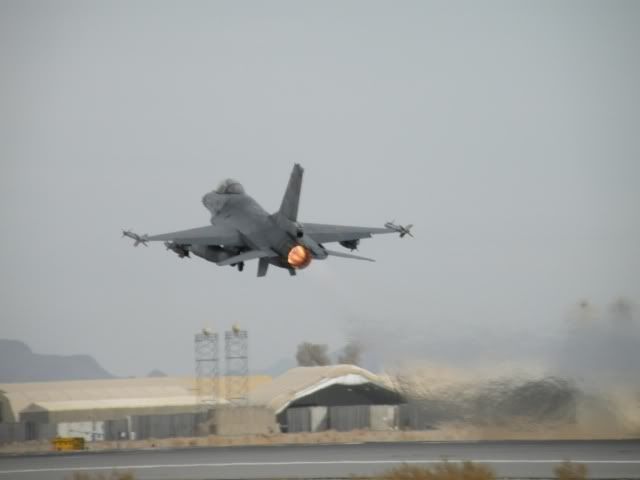Otherwise, no major changes are to be expected with regards to the deployment of the Belgian contingent. On KAIA, a small battalion-sized unit is still responsible for security along the airport's inner perimeter.

The photo, taken on March 8, shows a trooper from the 1st Regiment Carabiners/Grenadiers Prince Baldwin in a checkpoint along KAIA's perimeter. Yes, he's either of Congolese or Ruandese descent, which is not surprising given that Belgium, in view of its colonial past, has a significant Congolese/Ruandese community. Personally, I can only welcome the relatively recent evolution whereby the Belgian Army seems to be attracting a larger number of recruits of foreign extraction. I can think of but few examples to make immigrants feel more 'Belgian'. Call it Outlaw Mike-approved multiculturalism. The weapon he's holding is a light machinegun, manufactured by FN Herstal near Liège, in Belgium's east. It is typically used as a squad or platoon weapon, and the caliber is usually standard NATO 5.56x45mm. Since its introduction in 1974, it has entered service with the armies of a host of countries, among them the US Army, which knows it as the M249 SAW. The US versions are produced by FN Manufacturing LLC in Columbia, South Carolina. It seems they won't run out of work soon, since many first generation M249's are worn out and the US Army and USMC, rather than purchasing other light machineguns, will simply replace the old SAWs with new ones. The British Army uses it too, under the designation L108A1. In our army it is rather affectionately known as the Minimi, which is not some gullible multiculti moniker but simply short for Mini Mitrailleuse, which is French for "mini machine gun" - Herstal and Liège lie in Wallonia, Belgium's French-speaking south.
On Kandahar Airfield, the six F-16 fighter bombers continue to fly regular missions, mostly two a day. Most of them are recce and scare flights, but every now and then they engage ground targets in support of friendly troops, see the MoD's weekly overviews.

Unlike our Dutch colleagues, there's no denying that the Belgian military have been deliberately kept out of harm's way by our politicians. That does not mean that the Belgian missions were or are without risks. Actually, we've been incredibly lucky so far, given the fact that missiles are regularly lobbed into the KAF perimeter, that the Kunduz detachments (OMLT and deminers) regularly come under fire, and that even at KAIA there have been shooting incidents and suicide attacks. But as things are getting hotter all across Afghanistan, it seems only a matter of time before real war will come to our troops as well. The OMLT detachment for instance, responsible for the training of an ANA battalion, finds itself under fire almost every week now. Last week, the Belgian daily Het Laatste Nieuws reported that soldiers of the OMLT team, drawn from 2nd Commando Battalion at Flawinne, were engaged in a firefight lasting several hours, and almost ran out of ammo before they were finally relieved by air support. The same article mentioned that last monday a demining unit assisting the Germans had also been taken under fire, and that their camp in Kunduz had been the target of a rocket attack.

The photo shows some soldiers from our OMLT team which operates alongside the Germans in Afghanistan's north. In the background is their transport, the new Kraus-Maffei Wegmann Dingo II armored car, with a remotely controlled machinegun on top. Of these, the Belgian Army has ordered 220, with an option for 132 more.
As much as I deplore the fact that Belgian troops did not play a more active combat role, preferably alongside our Dutch colleagues, I think that the future is nevertheless upgrading the Afghan National Army to a self-sustaining status. Because after all, our armies are not in AF to do the fighting indefinitely. In the end, it is AFGHAN soldiers who have to keep their country safe. That I understand, is tough work. I recall a Dutch trainer stating, a couple of years back, that raw Afghan recruits "geen knip voor de neus waard waren" [weren't worth doodley squat - MFBB]. However, the same sentiments could be heard in Iraq in 03-05, and for a long time the efforts to get an efficient Iraqi Army in the scaffolds seemed lost. Over at Theo Spark however, one can regularly get a glimpse of an impressive military buildup in Mesopotamia tough. This seems to have become an army that won't run away from AQ and/or the Baathists. The same must be possible in Afghanistan.
There are of course those, like noted blogger and columnist Diana West, who argue that our efforts to raise strong homegrown forces in Iraq and Afghanistan, only serve to make stronger islamic enemies of the west. They certainly have a valid argument there - I will not exclude the outcome that they envisage. An ominous case in point is that in Iraq, christians are persecuted as never before. For the time being however, I would counsel patience and continuation of the current strategy. What nascent "democracies" see the light in the countries the West liberated from the worst of islamic extremism, they need homegrown protection to at least have a chance of getting off the ground. Maybe, and I admit it's a Big Maybe, in time, under the Infidel West's influence, Iraq and Afghanistan may develop into something halfway decent. If we succeed in getting them to solve their problems from parliamentary benches instead of that they cave each other's heads in, it's already a huge victory for OUR "infidel" ideas of state management. And if that status is attained, at some unspecified point in the future, maybe some softened version of islam will emerge. Maybe less 18-40 year olds will feel tempted to self-detonate. Maybe.
It's a lot of "maybes". But we've gotta to it this way, because the alternative, open war with the islamic world, would be terrible.
Not so much for us, but certainly for them.
MFBB.